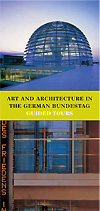Navigationspfad: Homepage > Art and History > Art > Artists
Joseph Beuys
Born in the city of Krefeld in 1921, died in Düsseldorf in 1986.
Beuys is generally recognised as one of the most important artists of our age. His outstanding significance lies in the fact that he propagated a synthesis of life and art and, with the courageous tenacity of an outsider, succeeded in attaining that ideal in his career. Beuys’s training and practice as a sculptor prepared him for the development of ‘social sculpture’. This concept necessarily entailed the artist involving himself in politics, which he understood as just one component of an all-encompassing notion of art. Realising this notion, which was his prime aim, meant liberating the creative energy contained in every human being. This would grant people the requisite maturity to behave responsibly towards their environment and actively shape history. Such a view of the world and humanity naturally had little to do with the day-to-day reality of politics, but this did not prevent Beuys from standing for the German Bundestag in 1976.
The Art Council of the German Bundestag was therefore especially keen to include a work by this artist in the Reichstag Building, despite his well-known reservations about parliamentary democracy. Beuys’s bronze sculpture outside the plenary chamber in the Reichstag Building unites many strands of his work. The table, battery and balls (originally made of earth) are everyday objects – ‘poor’ materials long considered unworthy of attention from artists and museums. Harnessing the immediacy and symbolic force they possess by reason of their familiarity, Beuys generates a process of intuitive association in the spectator that acquaints him or her with the artist’s attitudes to transmission and reception and the flow and storage of energy. Beuys was motivated by a strong sense of mission when devising his sculptures. As he put it in 1977: ‘I’ve found .that material can be used to express extraordinary things, things of fundamental importance to the whole world ... Or, to put it another way: the whole world depends on the arrangement of a few bits of material.’


